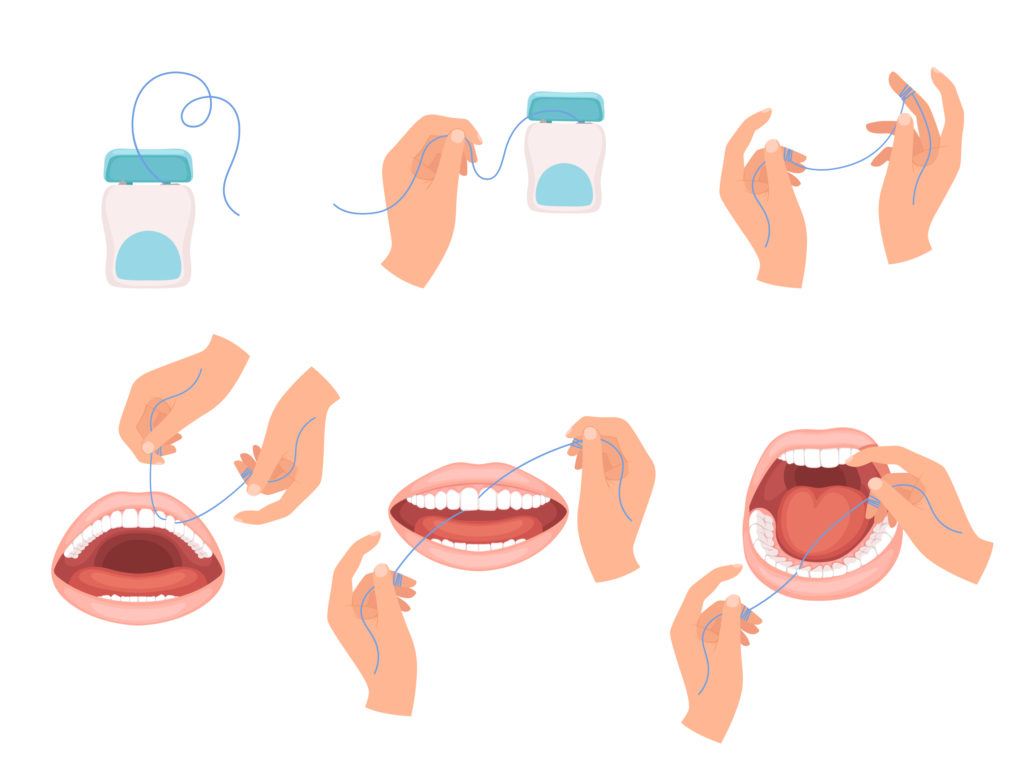
As discussed previously, it is important that your flossing technique is correct for effectiveness and for avoiding damage to your gums. Incorrect or occasional flossing may lead to sore or bleeding gums. If your technique is incorrect then you may well be wasting your time anyway so take care to learn the correct way.
Effective flossing requires you to meticulously clean the surface between every single pair of teeth; simply placing floss between the teeth will not be very effective. Here is a simple step-by-step guide to proper effective flossing:
- Unwind a length of dental floss; about 16 inches or 40cm is advised by dentists, and wrap each end around the middle finger on each hand.
- Take hold of a small piece, roughly 1 inch in length between the thumb and index finger and keep it taut.
- Slide the dental floss in between a pair of teeth and, keeping the floss taut, curve it around the tooth. Making a ‘C’ shape rub it against the tooth in an up and down motion, making sure you reach right up beneath the gum line. It can seem scary to floss beneath the gum line but it is important to clean this area as plaque beneath the gum line causes the biggest concern for your dental health. Move from the gum line to the tip two or three times for full effect. Repeat on the adjacent tooth.
- Using a new area of floss for every pair of teeth to avoid transmitting plaque bacteria to other teeth; repeat this action for the whole mouth and remember to include the back of the last teeth. Be careful not to floss too forcefully as the floss may snap and it may cause damage to the gums.
- Try and get into a rhythm; for instance, starting with the top teeth working from left to right and then repeating on the bottom teeth. This will ensure you do not miss any teeth.
- When you have completed this for the whole mouth rinse the mouth with water or mouthwash to remove any debris that you have loosened whilst flossing.
Whilst you should ensure for full effectiveness that you clean right up beneath the gum line, you should be careful never to apply pressure to the gum line whilst flossing. Applying pressure will traumatise the gums and will most probably damage gum tissue. This can seem like a tricky concept; flossing beneath the gum line without applying pressure to the gums, but it is possible as dental floss is designed to do exactly this without causing trauma. Speak to your dentist about the process if you feel unsure.
It is not unusual when you begin flossing for the gums to feel sore or even to bleed a little. This is because there will be a significant build-up of plaque due to the inadequacy of brushing alone in removing it completely. You should persevere with this as the bleeding will subside after the fifth or sixth time you floss. Once the plaque levels get down to the plaque accumulation just from the past 24 hours, removing the plaque will not cause bleeding because the trauma to the gums is lessened. However, if the bleeding does not subside after these first few times then you should revise your technique or even discuss it with your dentist to avoid causing unnecessary damage.

